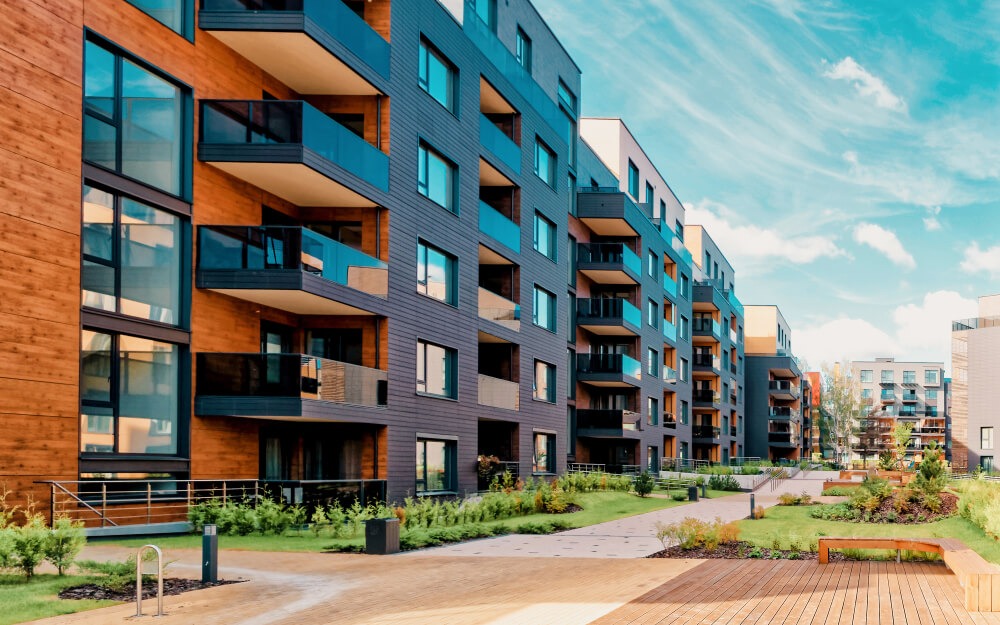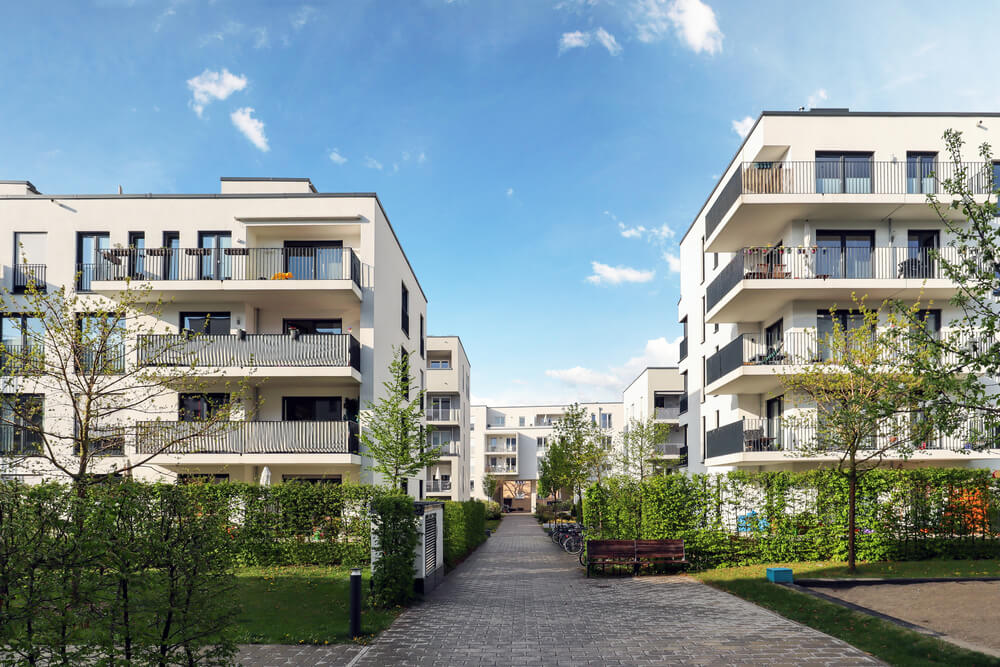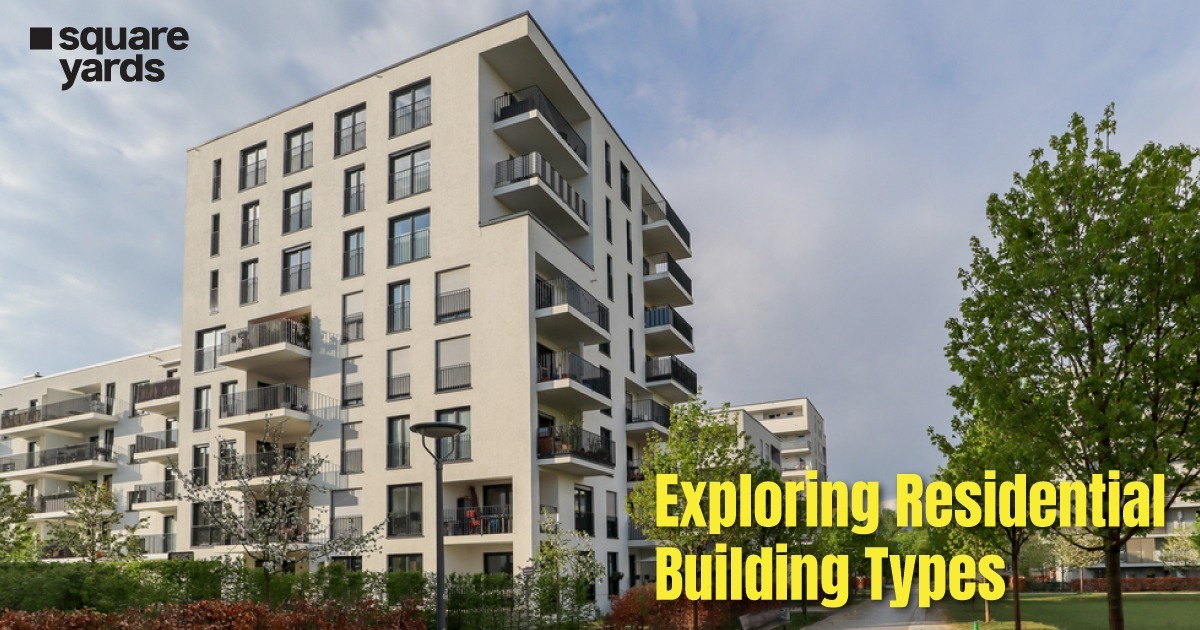We all must have come across this popular saying that ‘Home is where the heart is’, and residential buildings are the beating heart of our society. These structures are more than mere buildings; they play an important role in our daily lives. Choosing the best residential property for yourself or your family is important, and finding the right house requires time and effort.
Due to the increasing population, vertical or upward urbanisation has become important for accommodating so many people, and as a result, people are searching for residential houses. But with several types of high-rise residential buildings available, buyers need to find and select a property that fits their budget and offers a lifestyle that prioritises comfort, especially after the pandemic.
This article will discuss the meaning, types, and various benefits of residential buildings and why they are so much more than just a place to live.
Table of contents
- Residential Building: Definition
- Advantages of Residential Building
- Types of Residential Buildings
- Choosing the Right Residential Building
- Risks of Residential Properties
- Site Selection for Residential Buildings
- Factors You Need to Know about Residential Construction
- FAQ's about Residential Buildings
Residential Building: Definition

We all know what a residential building looks like, but do we know what it means? Well, maybe not! So, let us start with the basics. A residential building is simply a place where people live full-time. These houses comprise apartments, townhouses, condominiums, penthouses and other buildings.
Residential buildings are classified as buildings intended for private occupancy, whether permanent or temporary. It is meant to offer us comfort, security and protection. It should give us access to bare necessities like drinking water, electricity, sanitation, cooking food, etc.
Residential buildings are designed to accommodate both single-family and multi-family homes. Joint families would require bigger houses with more rooms and elaborate features, whereas single-family can also accommodate a small house.
Advantages of Residential Building
Focus on Security
Security is the top concern whether one lives in a society or an independent building. One of the main advantages of living in a residential building is that it provides safety to its residents. A gated society ensures better safety and security as it offers safety benefits, with trained guards and CCTV cameras for a secure living environment. Safety is crucial, especially for families with young children when choosing a place to live.
A Wealth of Amenities
Another advantage of residential buildings is the number of amenities they offer, which are also easily accessible. Many residential societies have gyms, swimming pools, children's play areas, and community halls. The convenience of having several amenities in one complex adds value to a good living experience without having to drive to other sections of the city. It saves time and allows residents to meet and interact with others who share their interests.
Maintenance
House maintenance is a major challenge, with plumbing and electrical issues cropping up frequently. Residential complexes offer the advantage of easy issue resolution with maintenance services. The management is responsible for cleanliness, hygiene, and any other concerns of the society.
Efficient Use of Space
Residential apartments are an appropriate choice for nuclear families as their requirement for space is small. Instead of being lavish, the beauty of these residential apartments is that they are exceedingly secure and convenient. Since in a residential society or complex, the apartments are next to each other; residential buildings can accommodate a high number of residents in a relatively small space. This is especially true in heavily crowded metropolitan cities where each square inch of land is valuable.
Cost of Living
An apartment has a major advantage, as it is more affordable than independent flats or houses. Maintenance costs are way less than that of a single-family house. Apartments are smaller in size, making it easier to manage resources and expenses. Additionally, modern apartments are becoming more environmentally friendly by incorporating water harvesting and solar energy, which adds to their benefits.
Types of Residential Buildings
Residential buildings exist in several types in different dimensions to solve other purposes and cater to varied lifestyles. Here are some prevalent types of residential houses:
- Single-Family Home
- Multi-Family Home
- Townhouse
- Condominium (Condos)
- Co-op
- Apartment Building
- Farmhouse
- Penthouse
Let us talk about these different types of residential houses briefly:
Single-Family Home
Houses built on a single land without any walls being shared with other buildings are known as single-family homes. There is an option to have an attached garage or not. Compared to different types of homes, single-family homes have more privacy and private gardens and backyards since it is not connected to any other houses. It is the complete responsibility of the owner to look after the maintenance of the house and the area around it.
Multi-Family Home
A multi-family building comprises several floors. However, they are primarily single-family homes that are divided into more units. These multi-family homes can also be rowhouse style or multi-storey, ranging in different sizes based on the property owner's requirement and number of family members. Some multi-family homes have separate entrances for each apartment, while most have a common entry to the house. Multi-family homes are the ideal type of property for investors, as many people prefer to live on one floor while renting out other floors to generate income. The units in multi-family homes are relatively smaller and less private than single-family homes.
Townhouse
A townhouse is a blend of a condominium and a single-family home. Townhouses are usually multi-storey buildings with common walls, not more than two, with a rooftop and a small garden. They are bigger in size when compared to a condo, but they are not as big as a single-family home. Some townhouses have joint maintenance agreements that help to split the maintenance costs between different families. Townhouses can be bought at lower rates than single or multi-family dwellings.
Townhomes often do not have access to shared amenities such as a gym or a swimming pool, and even though they are smaller in size, they do not provide the same level of privacy as single-family houses.
Condominium (Condos)
Condominiums or condos are independent units in a bigger complex or society. Condos have shared walls with other apartments and are subject to the homeowner’s association, which charges maintenance costs monthly or annually. These types of houses are popular in densely populated areas. These houses are typically located in metropolitan cities, as working-class individuals predominantly inhabit them, and the infrastructure in these areas is excellent. All unit owners collectively own the common areas of the building. There are certain restrictions by the Homeowners’ Association (HOA) on remodelling or renovating the condos. There are rules and regulations on keeping pets and renting out the condos.
Co-opeartive Housing
Cooperative Housing, referred to as Co-op, is a building jointly owned by a corporation comprising all its occupants. When you invest in a co-op, you don't buy real estate; instead, you buy individual shares in a non-profit organisation that gives you home access. The ownership of the building is common for everyone in a Co-op.
In most cases, you must clear an interview to be a part of a co-op. The HOA membership fees are typically cheaper than other residential houses as co-op members undertake maintenance as a community. Additionally, the cost of living is far lower than that of condos.
Apartment Building
The most well-known and common type of housing is an apartment type. Individuals commonly believe that apartment buildings, specifically in urban areas, are the most practical. Various types of apartments can be categorised, including studios, 1-bedroom, 2-bedroom, or 3-bedroom apartments, and penthouse residences. It is considered a good housing option for nuclear families, especially those looking for affordable and flexible living options.
Farmhouse
Over the past few decades, owning a farmhouse has become a trend. Urban investors own a piece of land in rural areas and convert it into a home-away-from-home. Farmhouses are secondary homes for people who get bored with their mundane lives and need a break. These homes are converted into vacation homes surrounded by greenery and landscapes. With the expansion of vertical buildings in metropolitan cities, there is a lack of greenery and open spaces. As a result, more people are buying houses outside or on the city's outskirts.
Penthouse
In India, penthouse ownership is becoming popular for those searching for high-end luxury properties. Located on the top floor of a high-rise residential building, penthouses are known for their opulence and comfort drenched in top-notch amenities. As the country's standard of living continues to rise and Western lifestyles influence more people, penthouses are increasingly attracting the attention of property buyers in India. Their luxurious amenities set them apart from other types of residential buildings.
Choosing the Right Residential Building

When searching for an ideal residential building, it is important to choose a location that is perfect in every aspect and encompasses all of the characteristics of the building. It is advised that you keep the following factors in mind:
Purpose of the Structure
When deciding on a location for a house, it is important to consider the purpose of the structure and how much privacy is needed. This should be the primary consideration before choosing a location or making a purchase.
Location of the Building
When selecting a location, it is important to consider its impact on the natural light and airflow. The chosen location should be in a municipality promoting a positive living and working environment due to its natural beauty and environmental quality.
Same Community
Living in a well-established or rapidly developing community is more desirable than simply being comfortable within the confines of your own home. Having neighbours with similar social traits is also advantageous.
Amenities Offered
People willing to buy a home in a residential complex should prioritise certain facilities on their wish list to ensure a satisfactory lifestyle while prioritising amenities based on their needs and budget. Different residential societies offer different sets of amenities to their residents. Some common amenities offered by various residential buildings include parking facilities, security, a clubhouse, and a park.
Don't miss It!
| Types of Houses | Know about Types of Houses |
| Mumbai Posh Area | Top 5 Posh Areas in Mumbai |
| Cabin House | What is a Cabin House? |
| Open House | What is a Open House? |
| Modern House Design | Modern House Design Ideas |
| 2 Storey House Design | What is Two Storey Modern House? |
| Duplex House | What is a Duplex House? |
| Standalone Building | What is Standalone Building? |
| Kerala House Design | Kerala House Design Ideas |
Risks of Residential Properties
Owning or investing in residential properties is financially profitable and gives a sense of security. However, it is important to be aware of the risks and problems that come with it. Understanding these risks helps you in making informative decisions. The following are some of the most prevalent risks linked with residential properties:
Market Risk
A residential property's value keeps changing depending on the market situation. The downfall of the economy, increasing interest rates, and changes in supply and demand can impact property prices. A decrease in property value can result in financial losses for property owners and investors.
Property Maintenance
Residential buildings require regular maintenance as well as minor repairs. Failing to solve these problems might lead to more serious issues and costs. These expenses influence your profits as a landlord or your finances as a homeowner.
Liability and Legal Risks
Owning a residential property has legal obligations. Local, state, and federal rules governing property management, tenant rights, and safety requirements must be followed by landlords. Failing to follow these norms can result in legal issues and financial penalties.
Natural Calamity and Insurance Costs
Natural calamities such as floods, earthquakes, and fires can cause physical damage to residential buildings. People should have sufficient money to cover the insurance cost since premiums can be expensive, and some perils may not be fully covered.
Regulatory Changes
Changes in zoning laws, rent control regulations, or tax policies can impact the profitability of the residential property. Investors and landlords must stay updated with potential regulatory changes affecting their investments.
Site Selection for Residential Buildings
Several factors must be considered while choosing a location for residential buildings. Some of these elements are listed below:
Shape and Location of the Plot
It is important to consider the geometry of the plot when constructing any type of residential building. The appearance of the building depends on the plot shape, and a cost-effective construction requires an easy-to-work-with plot. The location of the residential plot is equally important, as it can impact the price and beauty of the building. It is recommended to select a plot in an area with accessible amenities. Choosing a plot near a main road is also advisable, as they are typically more valuable in selling the property than those situated further away.
Amenities Available
When selecting a location for a residential building, it is important to consider the availability of essential facilities such as electricity, telephone, potable drinking water, internet connection, gas connections, schools, colleges, universities, and a reliable transportation system. A well-connected area with efficient transportation facilities ensures fast and easy communication.
Sewerage System
Residential properties must have a well-functioning sewage system to achieve sanitation goals. If we don't manage and treat sewage water correctly, it can result in significant issues like waterlogging and water pollution.
Factors You Need to Know about Residential Construction
Residential construction involves purchasing land, clearing it, and establishing essential infrastructure like roads, drainage, and utilities. The builder then offers to create custom, pre-designed, or pre-manufactured homes, depending on the market he wants to serve.
In some cases, builders construct houses without a confirmed buyer, hoping one will emerge after completion. The builder needs available land, skilled workers, reliable and low-cost material suppliers, and enough working capital to cover labour and living expenses during construction.
Conclusion
To sum up, residential buildings form the core of our communities, providing us with security, safety, and a sense of belonging. These constructions come in different types, each designed to serve diverse ways of living, ranging from private family houses to apartment buildings that promote city living and socialisation.
FAQ's about Residential Buildings
Q1. What is the meaning of residential buildings?
A residential building comprises several houses with one or more rooms that can be used long-term or short-term. They come with different amenities and utilities to meet a person's or family's living needs.




